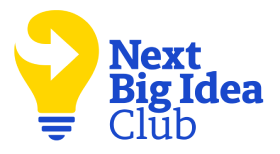Vanessa Urch Druskat is an Associate Professor of Organizational Behavior at the University of New Hampshire. She is a social and organizational psychologist, award-winning scholar, and a pioneer of the concept of team emotional intelligence. Vanessa also serves on the executive board of the Consortium for Research on Emotional Intelligence in Organizations.
What’s the big idea?
There is abundant evidence that teams are far better than individuals at making difficult decisions and solving complex problems. In fact, high-performing teamwork has driven every major innovation in human history. But how do you build an excellent team? That’s the challenge. It turns out that it’s not that difficult once you know the basic guidelines, but it does involve persistent intent and team involvement.
Below, Vanessa shares five key insights from her new book, The Emotionally Intelligent Team: Building Collaborative Groups that Outperform the Rest. Listen to the audio version—read by Vanessa herself—below, or in the Next Big Idea App.
1. Building great teams is not about hiring stars.
Many leaders believe that building a high-performing team requires hiring star employees. However, intelligence, abilities, and personalities are poor predictors of how people behave in teams and what they can contribute to a team’s success. This evidence has existed for decades, but most people have been indoctrinated into focusing on individual performance.
By far, the best predictor of motivation and behavior in teams is the specific norms that a team adopts to define how members will interact and work together. Norms are the patterns of behavior, routines, habits, and rituals that define a team’s culture, making each team unique.
Norms vary greatly among teams conducting the same tasks. They also affect the extent to which team members’ intrinsic needs are addressed, which in turn arouses the emotions that influence their motivation and trust in teamwork and collaboration. For example, neuroscientists find that evolution has shaped us to be highly sensitive to signals of disrespect and social rejection. These emotions foster distrust in teamwork and motivate self-protection and conformity driven by egoistic concerns.
“Teamwork thrives when norms foster and maintain a sense of belonging within a community.”
On the other hand, neuroscience reveals that our brain craves a sense of genuine acceptance and mutual support within groups. Teamwork thrives when norms foster and maintain a sense of belonging within a community. We found such norms in the highest-performing teams we studied across industries. The reliability of these norms engendered trust, psychological safety, and a shared sense of ownership over team outcomes. Members felt more in control of their own fate—and the team’s.
Formal and informal team leaders establish the norms that govern behavior within teams. Many leaders unknowingly propagate norms that don’t support belongingness and trust. Instead, in the name of efficiency, they establish norms that prioritize the direct exchange of information and resources without requiring empathy or mutual support. On the surface, this can seem perfectly satisfactory to leaders. Our research identifies such norms in average-performing teams across industries. The lack of community reduces engagement and collaboration, which are essential to innovation and high-performing teamwork. The disappointment this creates can lead to disengagement and, in some cases, even destructive behavior.
2. Your team needs emotionally intelligent norms.
My colleagues and I found that the best teams adopt emotionally intelligent norms. These norms address the innate needs of all team members, thereby creating a productive social and emotional environment that supports active participation, effort, and critical, sometimes heated, debates that lead to successful team decisions and outcomes.
The leaders of the highest-performing teams don’t just hope that team members’ generosity and social skills will emerge to support effective collaboration. They intentionally create these norms and routines.
3. Team members need to understand each other better.
My colleagues and I worked with a global leadership team that wasn’t reaching its full potential because members were working in silos rather than focusing on the team’s shared goals. They were competing with one another, rather than collaborating.
“The leaders of the highest-performing teams don’t just hope that team members’ generosity and social skills will emerge to support effective collaboration.”
With our help, they decided to adopt norms and routines that enabled them to learn more about each other’s roles and responsibilities. They even visited one another’s office locations. It boosted their sense of belonging and mutual support, which enabled the sharing of feedback and ideas that benefited the success of each person. Much of this feedback helped increase the emotional intelligence of individual team members, which in turn improved their relationships outside of the team.
Think of it this way: no sports team or musical group would assume they could play well together unless they knew something about their teammates’ unique backgrounds and talents, as well as what that person needed from others to play at their best.
4. You need routine assessments of the team’s strengths and opportunities.
We worked with a team whose new leader was overly controlling and projected his fear of making mistakes onto his teammates. Team performance declined, prompting the leader to replace two team members. As a result, team members felt undervalued and fearful, which increased competition within the team and hindered collaboration.
With the leader’s support, they developed a proactive action plan to adopt team norms, which included monthly structured meetings. During these meetings, team members first discussed what was and wasn’t working well in the team and brainstormed changes they would incorporate to ensure their team’s goal achievement. Their new norms increased their focus on helping and learning from one another. By collaborating to address the team’s and members’ challenges, the team leader’s confidence in the team increased, and the team outpaced its competitors within the year.
You need to develop norms that engage your team in both optimistic and pessimistic discussions. The team needs to both anticipate problems and create a vivid, hopeful, and motivating view of their ability to achieve shared success.
5. Engaging with stakeholders fosters innovative thinking within teams.
One team we worked with adopted a norm of ensuring stakeholder communication and involvement. They developed a stakeholder map that listed their stakeholders and then assigned one team member to serve as an ambassador to each.
The information they obtained helped them think more strategically about their priorities and ask for resources that would support their performance, for example, support for changes that the team sought. In one manufacturing organization, good relationships with stakeholders enabled a team to receive new and improved equipment. In a pharma team, good relationships allowed the team to receive quicker decisions from senior management.
“You need to develop norms that engage your team in both optimistic and pessimistic discussions.”
The highest-performing teams we studied recognized that they did not have all the information and resources they needed to succeed within their teams. I like to say that a team doesn’t need to reinvent the wheel if they talk to someone outside of their team to learn that the wheel exists.
Building high-performing teams is not rocket science, but it does require leaders to recognize that team building is not about fixing people or hiring for the perfect set of skills. The leader of one of the highest-performing teams we studied in a Fortune 100 company said it best when she told me, “No one on my team has A+ skills, but we collaborate in ways that produce A+ work.”
If there is a secret to building great teams, it’s the need to develop interaction norms and routines that bring out the best in team members and utilize team members’ talents. Emotionally intelligent norms arouse intrinsic motivation and build continuous assessment, learning, and adaptation into a team’s everyday culture.
Enjoy our full library of Book Bites—read by the authors!—in the Next Big Idea App:










